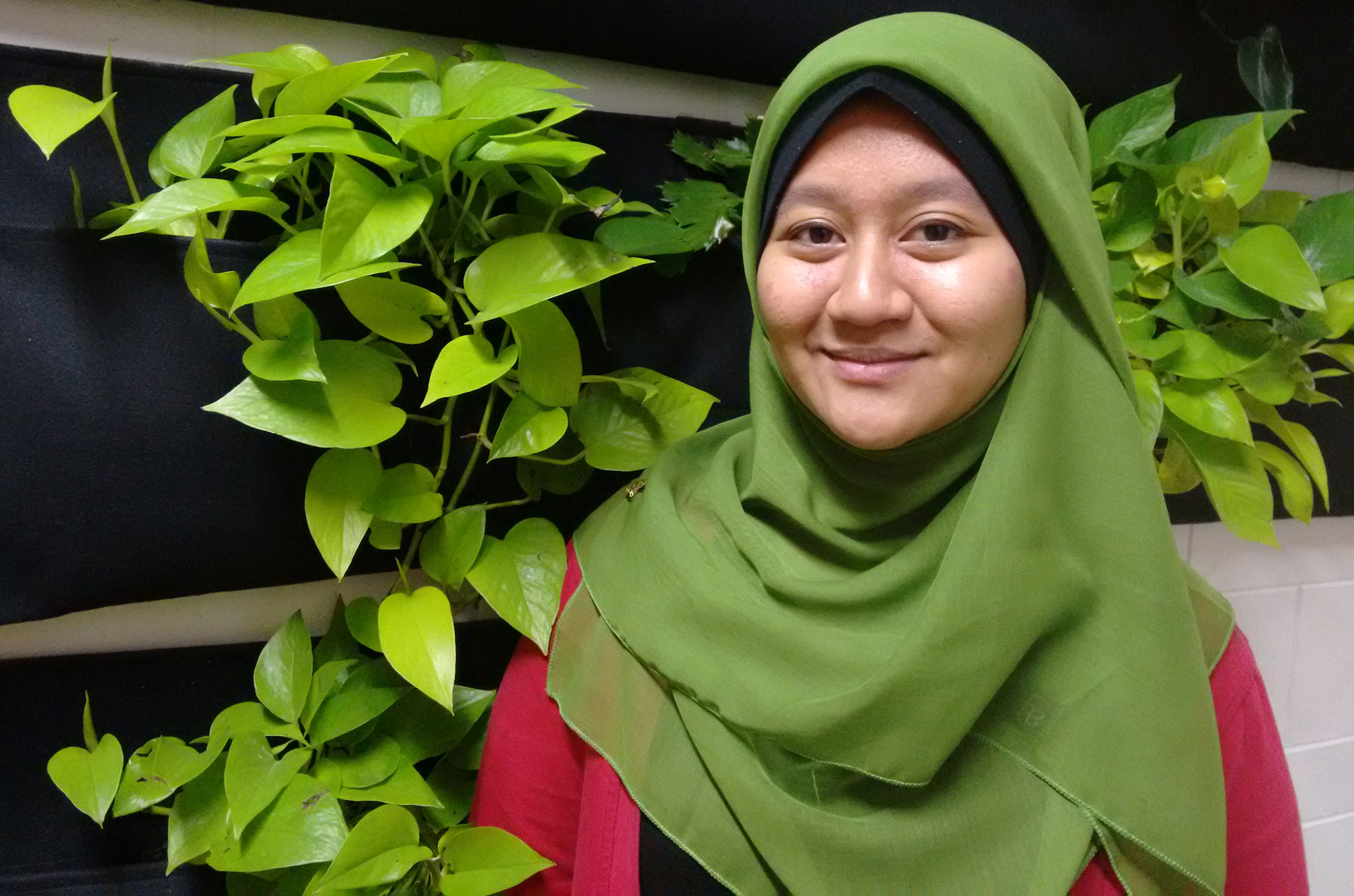Vertical greenery system on buildings

Urban areas across the globe are complex in nature; supporting substantial population growth as people move to cities seeking better employment opportunities.
Yet cities also need to be comfortable, facilitating and efficient spaces in which to live. Relph (1987) argues, “Like them or not, for the great majority of us they [cities] are the context of daily life and therefore merit at least some small part of our critical attention”. We need therefore, to ensure a healthy environment for the occupants of urban areas to ensure a good quality of living.
Fenner PhD student, Aini Jasmin Ghazalli, under the supervision of Associate Professor Cris Brack, is exploring the possibilities of using vertical greenery systems (VGS) to tackle two common problems in cities: air quality and workplace stress.
Jasmin’s research is looking at whether a VGS located in an urban settings can help reduce stress-loads in city workers. Previous studies using photographs have shown that people feel better after viewing natural scenes such as forests, compared to viewing urban scenes lacking nature elements (Ulrich, 1979).
Jasmin is also interested to see if the plants on the VGS are able to filter dust from the urban air. The study hopes to see if VGS can effectively filter dust, as dust is a common cause for respiratory diseases in cities. Dust can be smaller than a strand of a human hair and inhaling it on a daily basis can cause respiratory problems.
Green spaces in cities are usually associated with urban parks or community gardens. The use of finite land space within a city however, limits the availability of these green spaces, resulting in urban floors crowded with tall buildings, hard surfaces and more importantly, humans.
Literature reviews reveal that the studies on the benefits of VGS in cities is minimal compared to studies undertaken on green roofs and other types of green spaces in cities. The decline of available space, along with the increasing population in cities has encouraged designers to invent creative ways for greenery to be included in cities”.
As a result, the need for green spaces in cities has shifted to the use of actual building surfaces—including the roofs and the walls. Considering the body of knowledge on the benefits of green spaces in cities, it is very important to see if VGS can offer the same values as parks.
Coming from a landscape architecture background, Jasmin wanted to expand her theoretical background. “Coming to Fenner School was one of the best decisions I have made.
Working with Cris Brack in the Fenner School has provided me with a conducive environment, friendly peers and strong support system from both the staff and lecturers”, Jasmin said. As a tutor at one of the Research University’s in Malaysia, Jasmin hopes the experience and the contacts she establishes at the ANU will provide exciting future research collaborations.
The findings from this study could provide scientific evidence to urban planners and decision makers, in support of the installation of VGS as a solution for a better urban living in cities. “Why do buildings need to be grey and ugly? Greenery on walls would and does instantly give life to the urban environment. Best of all, not only do humans benefit from it, but other urban wildlife would definitely like it as well”.
Relph, E.C. (1987). The modern urban landscape: 1880 to the present: JHU Press.
Ulrich, R.S. (1979). Visual landscapes and psychological well‐being. Landscape research, 4(1), 17-23.
